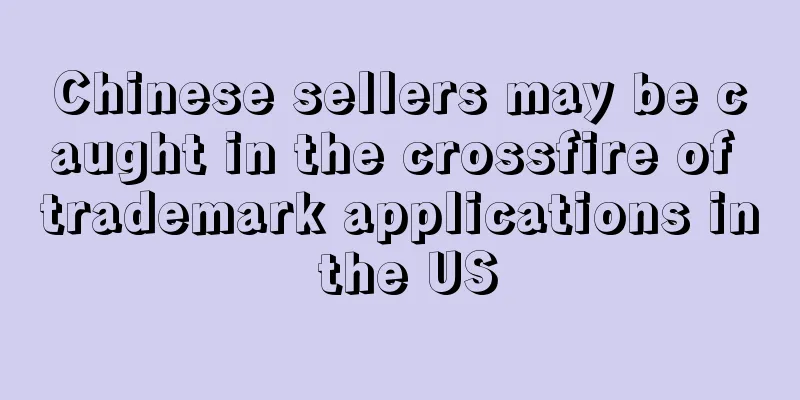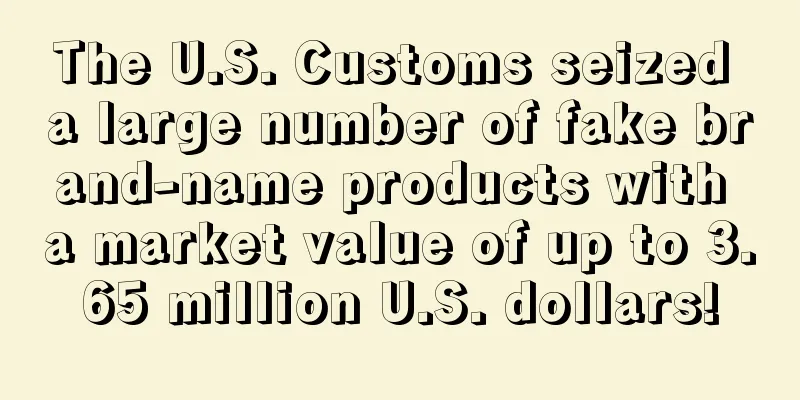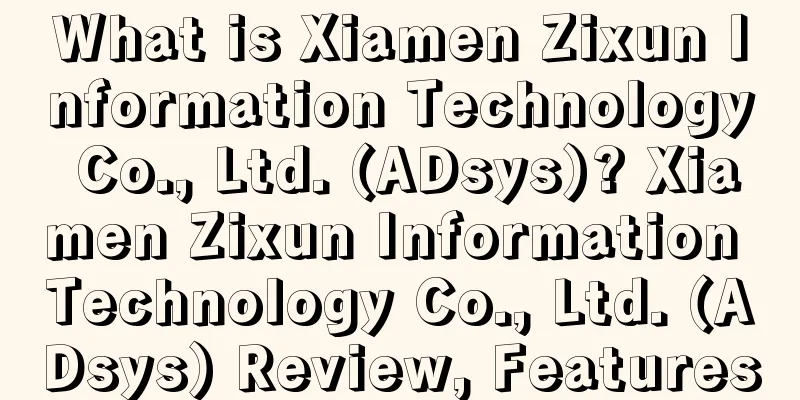Chinese sellers may be caught in the crossfire of trademark applications in the US

|
In recent years, cross-border e-commerce has developed rapidly, and corresponding infringement cases have also emerged one after another. In order to reduce the occurrence of infringement incidents, major e-commerce platforms are constantly improving their policies and regulations, which has also prompted Chinese cross-border exporters and sellers to pay more attention to intellectual property protection and apply for trademarks and patents, especially in Europe and the United States.
One stone stirs up a thousand waves
Recently, the official website of the United States Patent and Trademark Office ( USPTO) released an explosive report, which caused a huge backlash in the Chinese intellectual property community. The report shows that the USPTO investigated the main reasons for the surge in Chinese sellers' applications for trademarks and patents in the United States in recent years , and also explored the impact of Chinese applications for patents and trademarks in the United States on the intellectual property system.
The report shows that the number of intellectual property applications filed by China in the United States has been on a straight upward trend , with 4,706 applications in 2013, 6,340 in 2014 and 13,722 in 2015, gradually increasing.
The number of Chinese intellectual property applications in the United States is staggering relative to the global total. The report data shows that compared with 4,706 in 2013 and 76,566 in 2019, the number of intellectual property applications filed by Chinese companies in the United States has increased by 1,526.99%.
Non-market factors affect IP applications
The report shows that in addition to the normal application needs of some companies or individuals , the reason for the increase in China's intellectual property applications in the United States is that there are several non-market factors that seriously affect the increase in the number of intellectual property applications.
Government subsidies. In the report, Shenzhen, China, was used as an example. In 2013, Shenzhen issued an order for applying for intellectual property subsidies, which provided a RMB 5,000 subsidy (equivalent to US$750) for trademark registration to qualified enterprises or individuals .
Data shows that the official registration fee in the United States at that time was US$225, which means that the subsidy provided by the Shenzhen government far exceeded the official registration fee in the United States. This prompted China's applications for trademark registration in the United States to increase by 1264% between 2013 and 2017, of which applications from Shenzhen accounted for more than 42%.
Malicious registration: The report shows that it is mainly some institutions or individuals who see the business opportunities of trademark registration. They register trademarks and then resell them to make profits.
Defensive registration mainly refers to some companies or individuals who register their trademarks in advance in order to protect the legitimate rights and interests of their brands, so as to prevent their trademarks from being preemptively registered by other companies and being involved in infringement cases later.
However, Chinese sellers also need to be vigilant. According to the report data, about two-thirds of China’s trademark rights are not used, and most of these trademark rights belong to the clothing category.
Judging from the current situation, the trademark application in the United States is bound to usher in a revolutionary reform. This will make countless cross-border sellers innocent victims, and will also have a certain impact on China's foreign trade companies, including increasing the cost of trademark applications, strictly controlling the trademark application process, limiting the number of trademark applications, and other issues. USA trademark Chinese Sellers |
>>: With over 17 million monthly active users, Nykaa leads the Indian beauty e-commerce market
Recommend
Logistics industry grows significantly! Vietnam hopes to solve infrastructure problems
As the global pandemic spreads , Vietnam is expec...
What is Wayfair? Wayfair Review, Features
Wayfair is the largest home furnishing e-commerce...
Former ZEBO executives start their own business, winning first place in multiple categories on Amazon
Middle school students in Madrid use Temu to buy ...
Order volume surges 741%! Fashion apparel sets off North American e-commerce market
Under the influence of inflation and the decline ...
Search volume exceeds 4 million times! The most popular household item in 2020 is actually a mirror
Under the shadow of the epidemic, 2020 is particu...
Winter storm reappears in the United States, and back-end delivery will continue to be affected
According to foreign media reports, the icy and s...
Twitter, Shopify and eBay products have been hit by landmines and have been asked to be removed from the shelves by the US government!
Michigan Attorney General Dana Nessel joined 44 o...
What is Huazong Logistics? Huazong Logistics Review, Features
Huazong Logistics (Shenzhen Huazong Logistics Co.,...
What is Figetkool? Figetkool Review, Features
Figetkool is a product of Yantai Keling Network Te...
Another happy event? A big seller signs a multi-million dollar deal!
As a leading seller in the cross-border e-commerc...
What is Tangshan Port Hede Shipping Co., Ltd.? Tangshan Port Hede Shipping Co., Ltd. Review, Features
Tangshan Port Hede Shipping Co., Ltd. is a shippi...
Victoria, Australia, is "locked down" for 5 days, and the UK plans to impose the world's first "snack tax"
eBay owns nearly one-third of Germany's top 5...
YouTube launches Shorts beta version of "TikTok alternative" in the US market
According to foreign media reports recently, afte...
What is Built by Wendy? Built by Wendy Review, Features
<span data-docs-delta="[[20,{"gallery"...
What is eftPay? eftPay Review, Features
<span data-docs-delta="[[20,{"gallery"...









